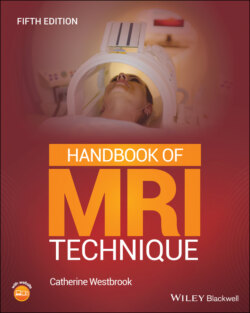Читать книгу Handbook of MRI Technique - Catherine Westbrook - Страница 10
Оглавление
Preface
The Handbook of MRI Technique has, for many years, been an established text for many MRI practitioners, colleges and MRI schools around the world. MRI in Practice (also published by Wiley Blackwell) provides MRI practitioners with a user‐friendly approach to MRI physics. The Handbook of MRI Technique is its practical companion and is intended as a guide to MRI scanning techniques and protocols. Its main aim is to help MRI practitioners of all kinds optimize protocols, improve image quality and recognize and rectify common artefacts.
In this, the fifth edition, it has been my intention to continue with the objectives of previous editions but update the reader on recent techniques and to expand certain chapters. Experienced MRI practitioners from the United States, Canada, Australia and Europe have made important contributions to reflect these advances and their practice. This is truly an international collaboration and, I hope, takes some small steps towards standardization of MRI practice.
The book is split into two parts. Part 1 summarizes the main aspects of theory that relate to clinical practice. Chapters on pulse sequences, cardiac gating, patient care and safety, and contrast agents have been expanded and updated. Part 1 also includes practical tips on equipment, protocol parameters and artefacts.
Part 2 includes a step‐by‐step guide to examining each anatomical area. It covers most of the common techniques and now includes sections on bowel and prostate imaging. Other examination areas have been updated to include techniques such as spectroscopy and there is a new chapter dedicated to paediatric imaging.
Under each examination area, categories such as common indications, patient positioning, equipment, suggested protocols, protocol optimization and artefacts are included. Guidance on contrast usage is also provided and all chapters also contain key facts and diagrams showing main anatomical structures. The fifth edition also includes a new section specifically related to slice prescription criteria with new localizer images (kindly supplied by ScanLabMR) and many new clinical images are provided. The accompanying website consists of questions and flashcards to enable readers to test their knowledge.
This new edition of the Handbook of MRI Technique is designed for all MRI practitioners regardless of their experience of MRI procedures. However, it is especially beneficial to those technologists studying for board certification or for others undertaking clinical MRI courses. The contributing authors and I hope that this new edition achieves these goals. Happy reading!
Dr Catherine Westbrook
